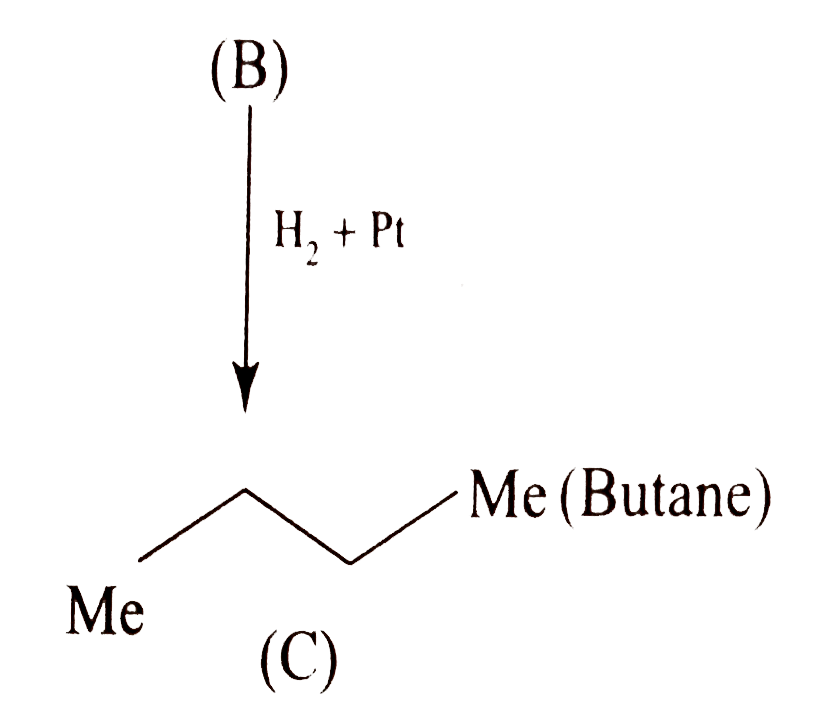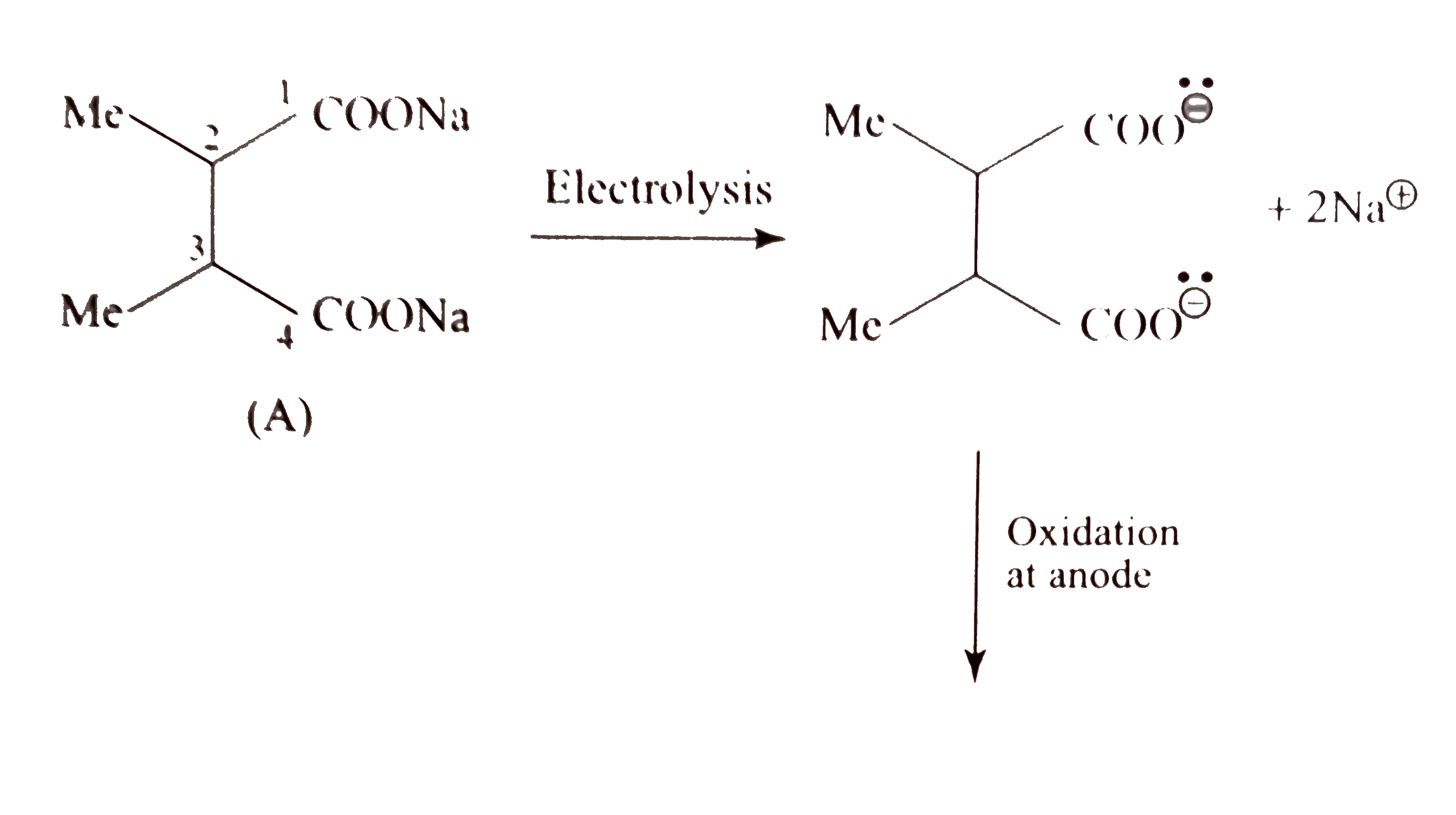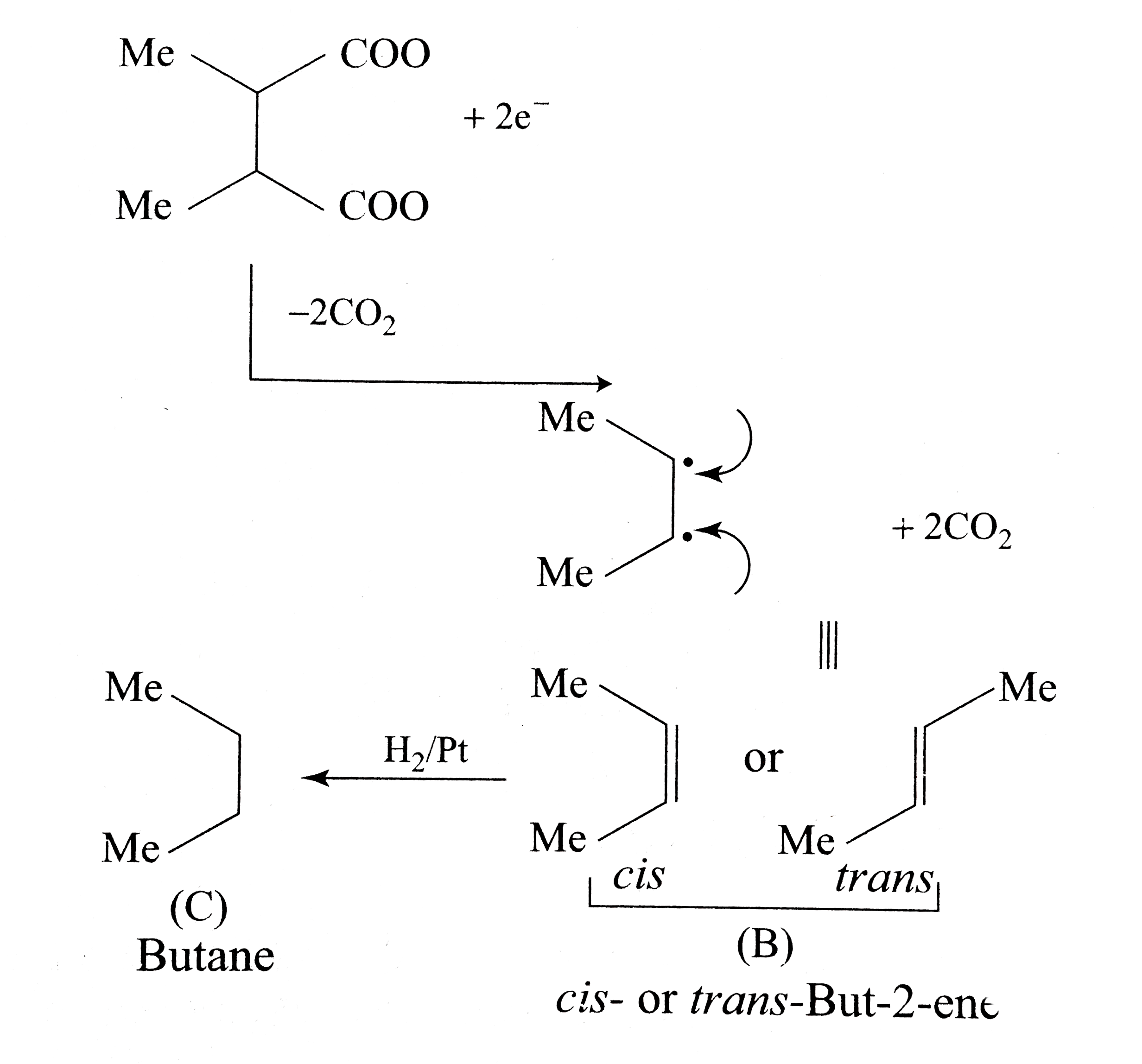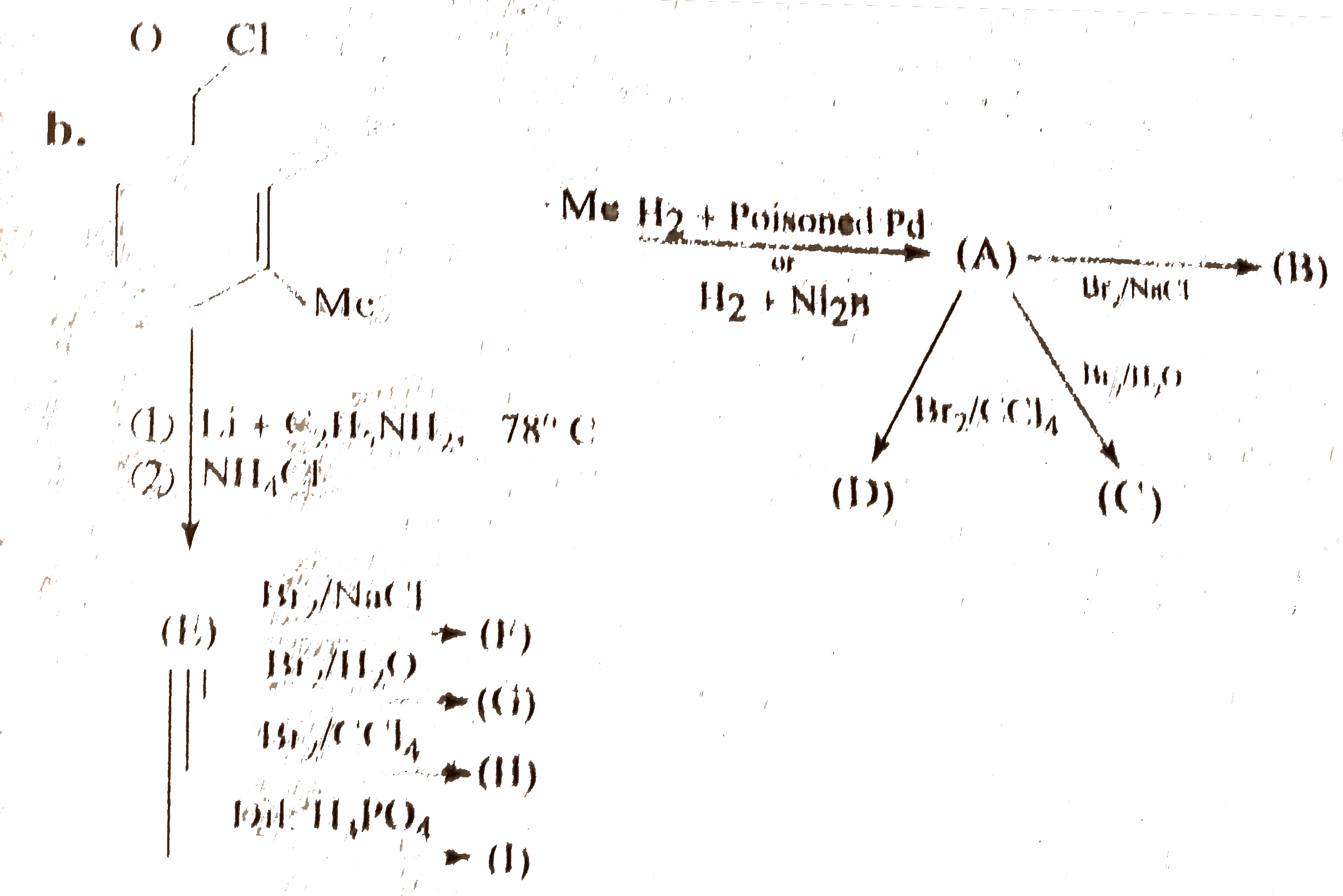Identify A and B.

Gas (B) gives test for unsaturation, i.e., it decolourises Br2 water and aqueous KMnO4 solution.
The compound (A) should be 6C−atom diabasic acid (four C atoms of (B) or (C) and two (COOH) groups. It can be as follows :

Therefore, (A) can be (II) not (I) (because B will not the give test of unsaturation).
 Disodium−2,3−dimethyl succinate
Disodium−2,3−dimethyl succinate
or Disodium−2,3− dimethyl butane −1,4−dioate

At cathode, the reduction of H2O takes place (since reduction potential of H2O> reductiono potential of Na⊕ion).
H2O+eΘ→OΘ+1/2H2(g)
Topper's Solved these Questions
- BOOK - CENGAGE CHEMISTRYCHAPTER - ALKENES AND ALKADIENESEXERCISE - SOLVED Example62videos
ALKENES AND ALKADIENES
- BOOK - CENGAGE CHEMISTRYCHAPTER - ALKENES AND ALKADIENESEXERCISE - EXERCISES29videos
ALKENES AND ALKADIENES
- BOOK - CENGAGE CHEMISTRYCHAPTER - ALKANES AND CYCLOALKANESEXERCISE - Archives13videos
ALKANES AND CYCLOALKANES
- BOOK - CENGAGE CHEMISTRYCHAPTER - ALKYNESEXERCISE - Exercises (Archives - Analytical and Desriptive Type)4videos
ALKYNES
Similar Questions
A compound (A) is a sodium salt of dibasic acid and on electrolysis gives a gas (B), gas CO2 at anode, and H2(g) at cathode.
Gas (B) does not give any test for unsaturation, i.e., it does not decolourise Br2 water solution and aqueous KMnO4 solution.
Gas (B) on reaction with (H2+Pt) at room temperature does not react but at 120∘C, gas (B) gives butane. Identfy (A) and (B)View SolutionMoist SO2decolourises KMnO4 solution .
View Solution
Knowledge Check
- Question 1 - Select One
Which do not decolourise KMnO4 in aqueous solution?
AC2O2−4BHSO−3CCO−3DSO−3 - Question 2 - Select One or More
A substance (P) releases a gas (Q) on reaction with H2O. (Q) decolourises Br2 water. (P) may be
ABeC2BBe2CCAl4C3DMg2C3 - Question 3 - Select One
Name the gas that can readily decolourise acidified KMnO4 solution:
ASO2BNO2CP2O5DCO2
a.

b.
c. Tetrachloroethane does not give the test for unsaturateion , i.e., it does not decolourise Br2 water solution. Explain why.
d.
e. Ricinoleic acid is isolated from castor oil. The structure of the compound is :

f. Explain why 1,2−dimethyl cyclopenten or 1,2−dimethyl cyclohexen with HBr undergoes anti−( or trans−) addition but with aqueous acid undergoes both anti− and syn−( trans and cis−) additions.View SolutionAn aqueous solution of gas ‘A’ gave the following data (reactions):
It decolourised an acidified KMnO4 solution.View SolutionAn amorphous soild A burns in air to form a gas B which turns lime water milky. The gas is also produced as a by - product during roasting of sulohide ore. This gas decolourises acidified aqueous KMnO4 solution and reduces Fe3+ to Fe2+ . Identify the solid A and the gas B and write the reactions involved.
View SolutionAn amorphous soild A burns in air to form a gas B which turns lime water milky. The gas is also produced as a by - product during roasting of sulohide ore. This gas decolourises acidified aqueous KMnO4 solution and reduces Fe3+ to Fe2+ . Identify the solid A and the gas B and write the reactions involved.
View SolutionName the gas that can readily decolourise acidified KMnO4 solution:
View Solution

